
Quantum Efficiency Tester
PL/EL Integrated System
PV-Reflectumeter
3D Confocal Microscope
In-Line Four Point Probe Tester
Four Point Probe Tester
In-Line Thin Film Thickness Tester
Raman Spectrometer
FTIR Spectrometer
Spectrophotometer
Automatic Spectroscopic Ellipsometer
Contact Resistance Tester
Ultra depth of field 3D microscope
Auto Visual Tester
VMM PV Vision Measuring Machine
Solar Cell Horizontal Tensile Tester
Steady State Solar Simulator for Solar Cell
Solar Cell UV Aging Test Chamber
Solar Cell Comprehensive Tensile Tester
Visual Inspection Tester
Wet Leakage Current Tester
PV Module EL Tester
PV Module UV Preconditioning Chamber
Steady State Solar Simulator for PV Module
Current Continuous Monitor
Potential Induced Degradation Test
Bypass Diode Tester
LeTID Test System
Reverse Current Overload Tester
Impulse Voltage Tester
Hipot Insulation Tester
Ground Continuity Tester
Hipot Insulation Ground Tester
Damp Heat Test Chamber
Humidity Freeze Test
Thermal Cycle Test Chamber
Dynamic Mechanical Load Tester
Static Mechanical Load Tester
Hail Impact Tester
Robustness of Termination Tester
Module Breakage Tester
Cut Susceptibility Tester
Peel Shear Strength Tester
Universal Testing Machine (Single-arm)
Universal Testing Machine (Double-arm)
Glass Transmittance Tester
Acetic Acid Test Chamber
EVA Degree of Crosslinking Test System
Junction Box Comprehensive Tester
Drop ball tester
Semi-automatic scanning four-probe tester
Stylus Profilometer
Maximum Power Point Tracker
Perovskite Glass Transmittance Tester
Perovskite P1 Laser Scribing Multifunctional Testing Machine
Perovskite Online PL Tester
Perovskite Online Sheet Resistance Tester
Online Perovskite Film Thickness Tester
Perovskite Process Inspection Workstation
Portable IV Curve Tester
Portable EL Tester
Portable Thermal Imaging Tester
Solar Module Multi-Channel Testing System
PV Inverter Power Quality Tester
Drone EL Tester
IV Tester
IVEL Cell Sorting Machine
Cell PID Tester|Detailed Explanation of Potential Induced Degradation Effect
Date : 2024-04-26Views : 130
With the development of renewable energy, solar power generation system, as one of the important forms of clean energy, has received widespread attention. However, in actual operation, it is often affected by the PID effect (Potential Induced Degradation), which leads to power attenuation and efficiency decline, thus affecting the performance of the entire solar power generation system. This article will focus on different types of PID mechanisms and introduce Cell PID Tester.
Main types of PID
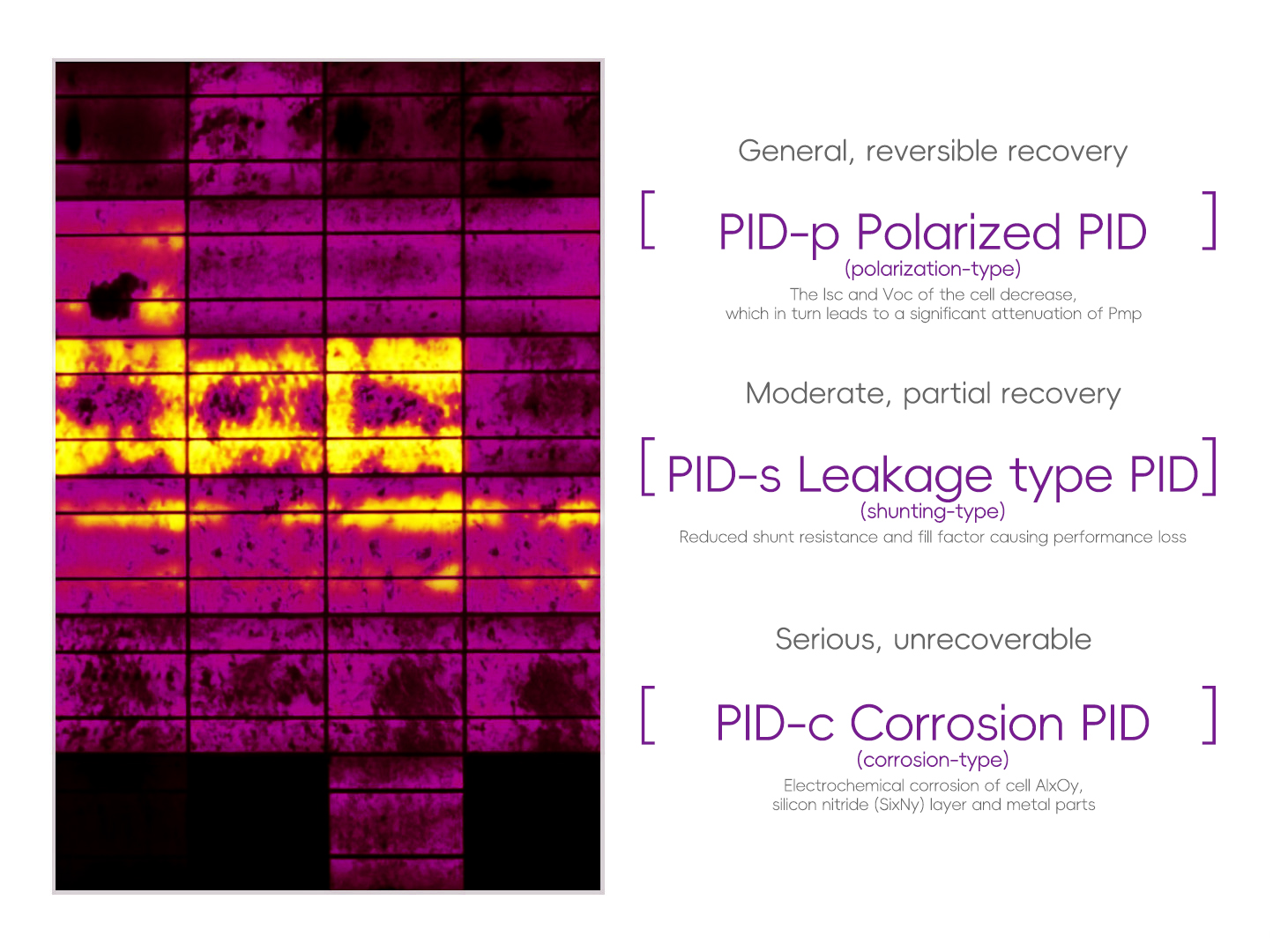
PID effect characteristics of P-type cells
P-type double-sided double-glass cells generally produce PID-s on the front, PID-p on the back, and PID-c attenuation may occur.
Front side: After Na+ ions are precipitated from the glass, since the upper surface of the P-type cell is P-doped and negatively charged, Na+ ions tend to migrate further into the interior, and PID-s is prone to occur. On the contrary, since the upper surface of the N-type cell is B-doped and positively charged, which prevents Na+ ions from moving inward, it is difficult for PID-s to form on the front of the N-type cell;
Back side: Compared with P-type single glass, the back side is changed from aluminum back field to aluminum wire. The positive charge driven by the external electric field is more likely to destroy the field passivation effect of aluminum oxide, so PID-p is more likely to occur; In addition, the back side of P-type double glass uses Ag/Al slurry electrode, which is more sensitive to water vapor and acid than the front side.
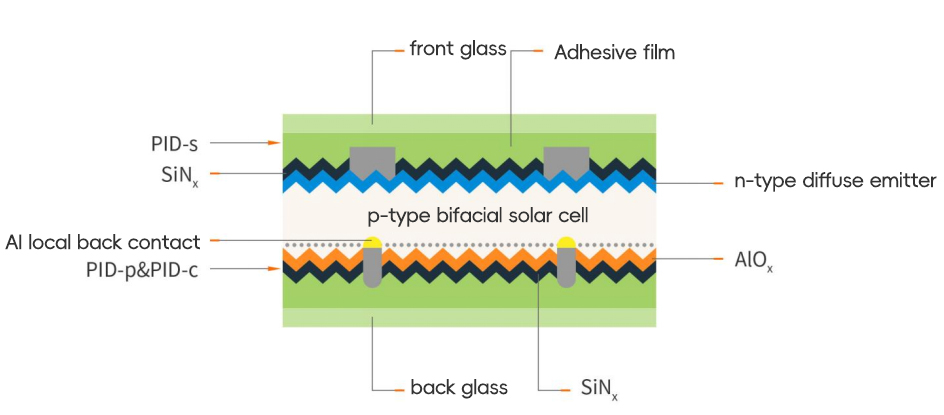
P-type bifacial solar cell structure diagram
PID effect characteristics of N-type TOPCon
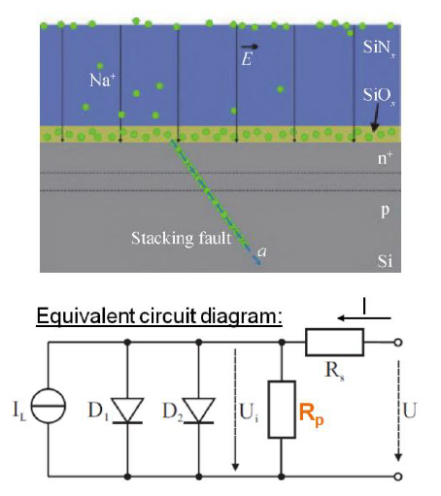
TOPCon PID-s schematic diagram
PID-p is prone to occur on the front side, but the PID effect on the back side is not obvious. The front structure of TOPCon cell is similar to the back structure of P-type double glass, so it is more prone to PID-p. At the same time, the Ag/AI slurry electrode used on the front is more sensitive to water vapor and acid. The back side of TOPCon cell is similar to the front side of P-type double glass. Due to the better passivation effect, PID-p is not easily generated.
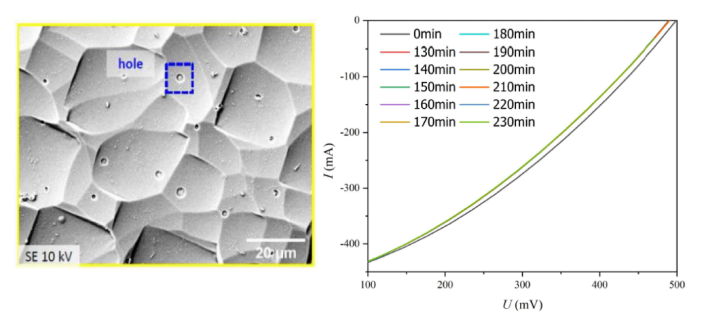
TOPCon cell PID-c parameter monitoring chart
PID effect characteristics of N-type HJT cell
PID-c is prone to appear on both sides. HJT is a double-sided symmetrical structure. It is plated with intrinsic amorphous silicon on the upper and lower sides of the N-crystalline silicon wafer, and then plated with an amorphous silicon passivation layer and an ITO doped layer to make a power generation film.
Mechanically, there is no PID-p phenomenon, but since ITO is a doped indium tin oxide conductive film material, it is easy to cause PID-c due to precipitation. In addition, the amorphous silicon layer and ITO of the HJT cell are sensitive to ultraviolet light and water vapor. It is more sensitive, and because its surface structure is quite different from that of crystalline silicon cells, its adhesion to conventional encapsulation films is weak.

HJT structure diagram
From the above analysis, it can be seen that the causes of PID effect in n-type or p-type modules are the same. Only the PID types in different planes are different. The electric field of n-type cells is higher than that of p-type cells, and the charges are concentrated. The impact on the built-in electric field of the P-N junction is more obvious. The carrier surface load of the n-type cell is mainly concentrated on the front side of the cell, which is opposite to the P-N junction direction of the p-type cell. Therefore, the PID attenuation is mainly concentrated on the front side of the cell, and the front side is the main force of the module power output, which leads to the PID effect of the TOPCon cell. More obvious than PERC cell.
Cell PID Tester
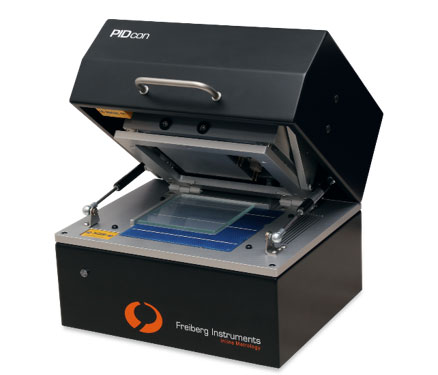
E-mail: market@millennialsolar.com
Introduction:
The above-mentioned PID mechanism was tested by applying temperature, light and high voltage to the cell, and measuring the IV curve under light after polarization in two directions to determine the PID sensitivity.
Fulfill the standard:
Manufactured according to IS09001, compliant with CE standards, IEC 62804-TS standards
Features:
•Easy-to-use desktop device, no environmental chamber required
•Test duration: 4 hours; Voltage: ±1.5kV
•Research, production and quality control of PERC, AL-BSF, PERC+, bifacial PERC, PERT, PERL and IBC cells
•Measurable parameters: shunt resistance, power loss, conductivity, leakage current, humidity and temperature
•IP-based system allows remote operation and technical support from anywhere in the world
The emergence of the PID effect may rapidly reduce the power generation of the solar power generation system (the amplitude can even reach 50%), seriously affecting the life of the system and the normal income of the power station, and hindering the rapid application of photovoltaic power generation systems. Therefore, research on the occurrence and development of the PID effect Prevention and control are of great significance to the development of photovoltaic power generation systems. Cell PID Tester can quickly detect important parameters that determine cell performance, predict the impact of PID in advance, and monitor PID attenuation and recovery processes.

































































